If You Can Hold a Bridge for This Long After 50, Your Glutes Are Stronger Than Most
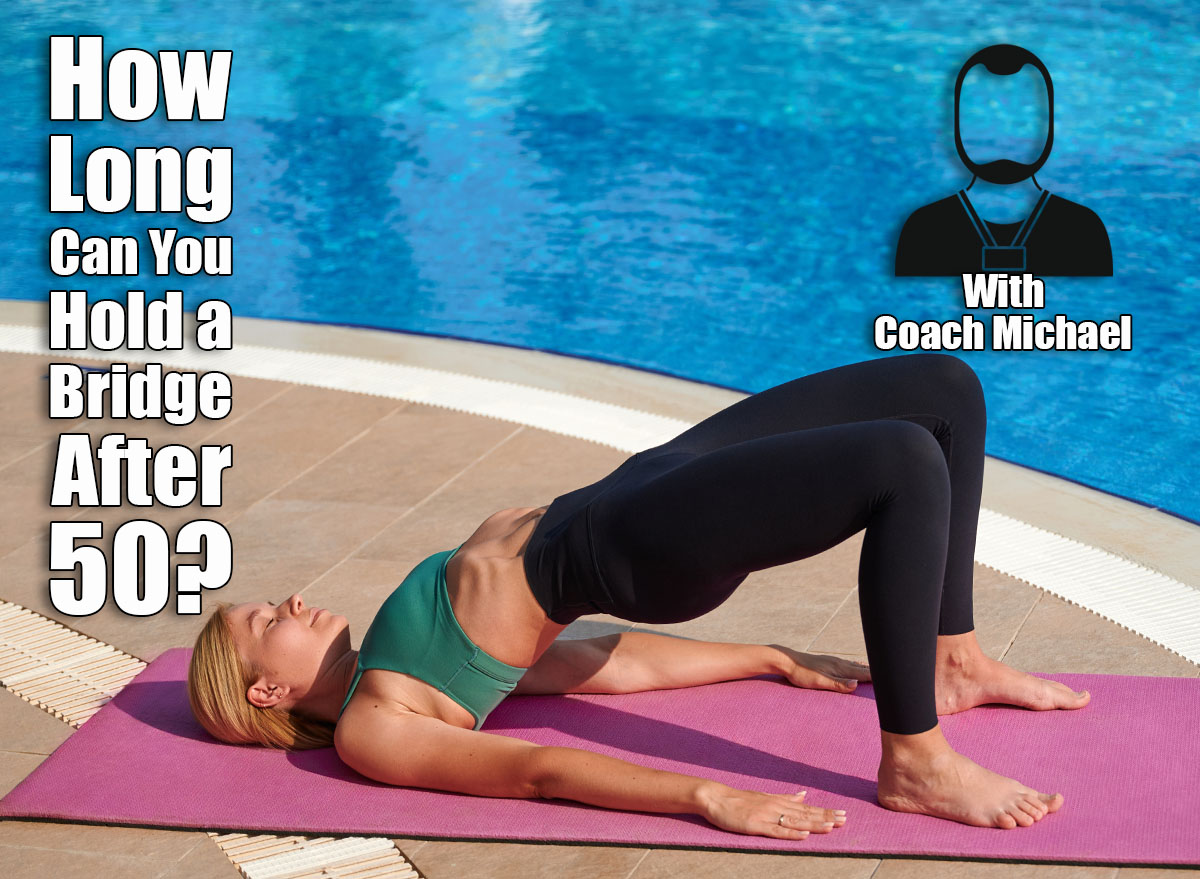
You’ve probably noticed it’s getting harder to get out of low chairs without using your arms, or maybe you’ve started taking the elevator instead of the stairs more often. These subtle changes aren’t just signs of aging—they’re red flags that your glutes, one of the largest muscle groups in your body, are losing their strength. Strong glutes are absolutely fundamental in the way we move, reducing the risk of back pain, helping you walk better, and significantly reducing the risk of falls as we age. Unfortunately, in 35 years as a certified personal trainer, glute weakness is one of, if not THE main weakness, I see in adults as they get older. Here’s how a simple bridge test can reveal just how strong your glutes really are—and what you can do about it.
The Warning Signs Your Glutes Are Getting Weaker

The most obvious sign I see is people pushing themselves up from chairs using their arms instead of their legs. Watch someone over 50 get out of a low chair – if they’re grabbing the armrests and hauling themselves up, their glutes aren’t doing the job they should be.
Lower back pain is another big one. When our glutes stop firing properly, our lower backs have to compensate for every movement. I see clients who’ve been to physiotherapists and chiropractors for years without anyone addressing the real problem – weak and sleepy glutes.
Walking pattern is a solid indicator, too. People start taking shorter steps and their hips don’t extend fully behind them anymore. Instead of a powerful push-off from the back leg, they shuffle forward. You’ll also notice people struggling more with stairs, especially going up. That’s pure glute weakness right there.
The knee cave is another biggie. When squatting down or standing up, your knees collapse inward because your glutes aren’t strong enough to keep proper alignment. This puts massive stress on your knee joints and is often why people develop knee problems in their 50s and 60s.
Why Glute Bridges Are Perfect for Your Age
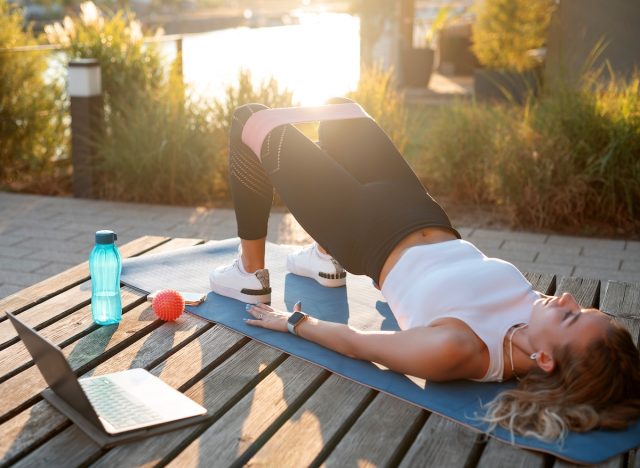
Glute bridges are perfect because they teach your glutes to fire again without putting stress on your spine or knees. After decades of sitting, most people’s glutes have essentially gone to sleep. The bridge wakes them up in the safest possible way.
They’re also incredibly functional. The hip extension movement you do in a bridge is exactly what you need for walking, standing up, and climbing stairs. When you strengthen this pattern, everything else in daily life becomes easier.
The fantastic thing about bridges is that they work whether you are a total beginner or you’re reasonably fit. You can start with basic holds and progress to single-leg variations or add resistance. I’ve had 75-year-olds who couldn’t hold a bridge for 10 seconds progress to 90-second holds in just a few months.
Bridges also help reverse the damage from sitting. They open up the hip flexors while strengthening the glutes and hamstrings. This combination is exactly what people need to counteract the forward head, rounded shoulders, and tight hips that come from desk jobs and too much sitting.
How to Do a Perfect Glute Bridge Hold
- Lie on your back with your knees bent and feet flat on the floor, about hip-width apart. Your feet should be close enough to your bottom that you can just touch your heels with your fingertips when your arms are by your sides.
- Before you lift, squeeze your glutes and brace your core like someone’s about to poke you in the stomach. This is crucial – the movement starts with the glute squeeze, not by pushing through your feet.
- Drive through your heels and lift your hips up until there’s a straight line from your knees to your shoulders. Don’t arch your back or push your hips too high. The top position should feel like a gentle stretch across the front of your hips.
- Hold this position while breathing normally. Your glutes should be working hard, but your hamstrings shouldn’t be cramping. If they are, move your feet slightly closer to your bottom and focus more on squeezing the glutes rather than pushing through your heels.
- Keep your knees in line with your hips – don’t let them fall out or cave in. Your weight should be evenly distributed across both feet, and your shoulders should stay relaxed on the floor.
What Your Bridge Hold Time Really Means
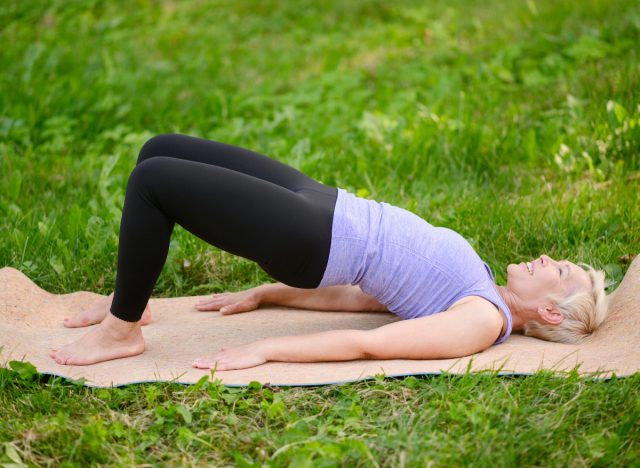
Most people in their 50s who come to see me can hold a proper bridge for about 20-30 seconds when they start. That’s if they’re doing it correctly with good form and proper glute activation.
I don’t see much difference between men and women at this age. Both sexes have usually spent decades sitting and both have similar levels of glute weakness. Men might have slightly better initial strength, but women often have better body awareness and pick up the proper technique faster.
The concerning thing is how many people think they can hold a bridge longer than they actually can. They’ll tell me they can do a minute, but when I watch them, they’re using their back muscles, pushing through their toes, or letting their hips sag after 15 seconds.
A true 30-second hold with perfect form is actually quite good for someone starting out in their 50s. If someone can genuinely hold it for 45-60 seconds with proper technique, they’re above average for their age group.
Your Glute Strength Report Card
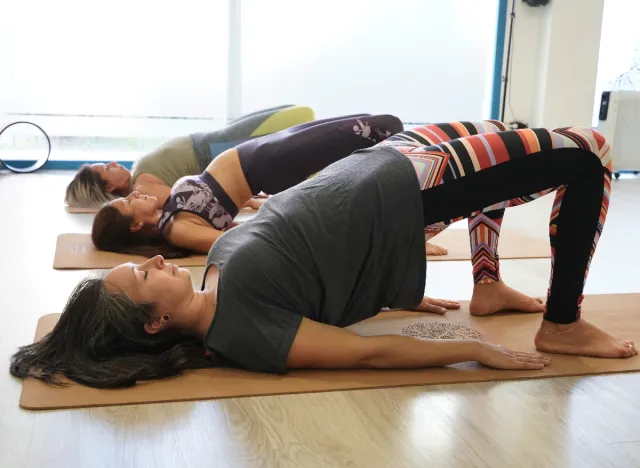
- Under 20 seconds tells me someone has significant glute weakness that’s probably affecting their daily life. They’re likely struggling with stairs, getting out of chairs, and probably dealing with back pain.
- 20-45 seconds is below average but workable. With consistent training, these people can see rapid improvements. They have some strength there, it just needs to be developed.
- 45 seconds to 1 minute represents average strength for this age group. These people can probably manage daily activities without major issues, but they’d benefit from more power and endurance.
- 1-2 minutes is above average and shows good functional strength. These people likely stay active and have been doing some form of regular exercise.
- Over 2 minutes with perfect form puts someone in the top 10% for their age. This level of strength usually means excellent overall fitness and very low risk of falls or back problems.
RELATED: 5 Chair Exercises That Build More Strength Than Weight Lifting After 50
What It Means If You Can Only Hold for Under 30 Seconds
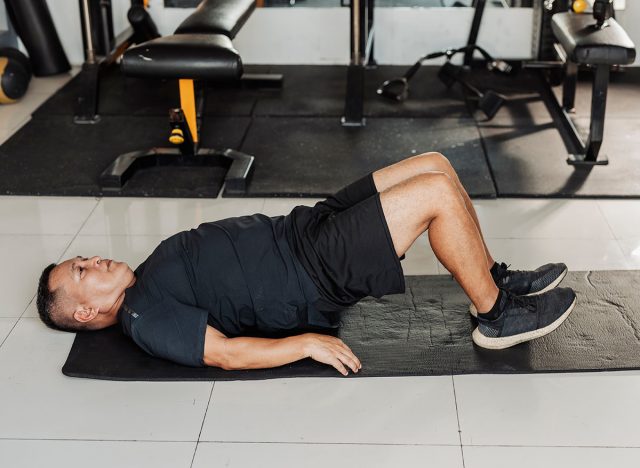
It tells me their posterior chain – glutes, hamstrings, and lower back – is seriously compromised. These are the muscles that keep you upright and moving forward, so weakness here affects everything.
They’re probably compensating for this weakness in ways that will cause problems down the line. Their lower back is likely overworking, their hip flexors are probably tight, and their posture is deteriorating.
This level of weakness often correlates with poor bone density in the hips and spine. The glutes are major muscle groups, and when they’re weak, it usually means the person isn’t doing enough weight-bearing activity to maintain strong bones.
Their fall risk is elevated. The glutes are crucial for balance and for recovering when you trip or stumble. Someone who can’t hold a bridge for 30 seconds probably can’t generate enough power to save themselves if they lose their balance.
The good news is this is completely reversible with consistent training. I’ve seen people go from 15-second holds to over a minute in 8-12 weeks.
What It Means If You Can Hold for 1-2 Minutes
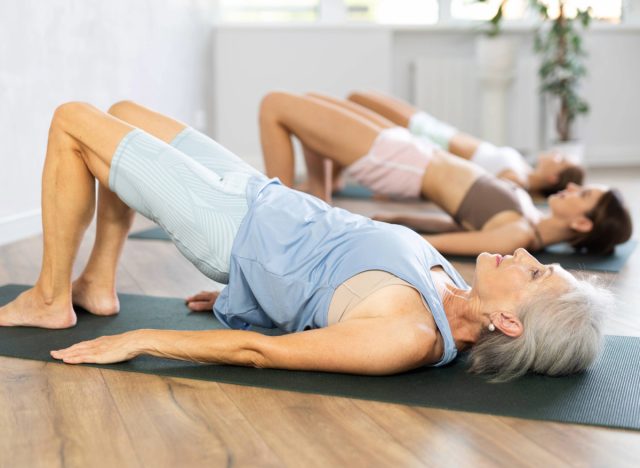
This person has maintained good strength and is probably active in their daily life. They’re walking regularly, taking stairs when possible, and their body is functioning the way it should for their age.
Their risk of developing lower back problems is much lower than average. Strong glutes protect the spine and maintain proper posture, which prevents the cascade of problems that come with back pain.
They likely have good bone density and muscle mass for their age. This level of strength usually indicates they are doing some form of resistance training or staying very active with functional movements.
Their balance and fall risk are probably excellent. Strong glutes provide the foundation for good balance and the power to recover if they do stumble.
However, I still encourage these people to keep progressing. The goal is not just to maintain what you have – it’s to keep getting stronger so you have a buffer against the natural decline that comes with aging.
What It Means If You Can Hold for Over 2 Minutes
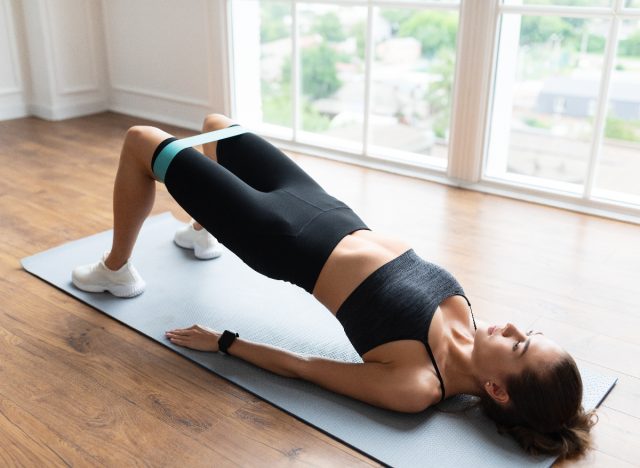
They are in the top tier for their age group. This level of strength puts them functionally younger than their chronological age. Their body is performing like someone 10-15 years younger.
These people usually have excellent overall fitness and have made exercise a priority throughout their adult life. They understand that strength is the foundation of healthy aging and have acted on that knowledge.
Their risk of age-related decline is minimal. Strong glutes at this level indicate robust bone density, good muscle mass, excellent balance, and proper movement patterns. They are likely to maintain their independence well into their 80s and beyond.
From a performance standpoint, they can probably handle any daily activity with ease and have the strength reserves to take on new physical challenges. They are not just surviving – they’re thriving.
The only caution I give these people is to make sure they aren’t neglecting other aspects of their fitness. Sometimes people get so focused on one exercise that they miss gaps elsewhere.
How to Improve Your Bridge Hold Time Fast

- Start with shorter holds done more frequently. Instead of trying to hold for as long as possible once a day, do 10-15 second holds repeated throughout the day. This teaches the nervous system to activate the glutes without causing fatigue.
- Master the basic movement first. Many people rush to hold longer without learning proper activation. Spend time just squeezing the glutes before lifting, then lifting up and immediately lowering down. Get the pattern right before working on endurance.
- Add glute activation exercises before attempting the bridge. Clamshells, glute squeezes, and simple marching movements wake up the muscles and make the bridge more effective.
- Train every other day rather than daily. Our glutes need time to adapt and recover. Consistent training, allowing proper time for recovery beats daily grinding that almost always leads to fatigue and bad form (increasing the risk of injury significantly).
- Focus on quality over quantity. A perfect 20-second hold is worth more than a sloppy 45-second attempt. Build the time gradually – add 5 seconds per week rather than trying to double your time overnight.
- Address the hip flexors, too. Tight hip flexors prevent proper glute activation. Simple hip flexor stretches and couch stretches can make an immediate difference in bridge performance.
Looking for easy ways to lose fat? Here’s How Long Your Walking Workout Should Be To Shrink Belly Fat.